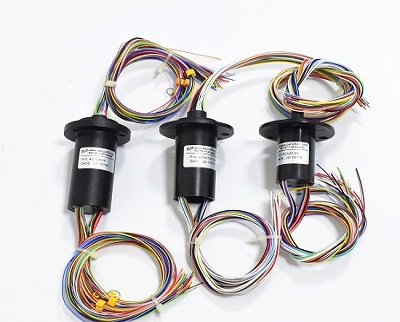Time: 02, 08 2021 Views: 136
Firstly, the power of the luminaire decides the electronic parameters of the slip ring. The power of those luminaires used in large occasion reach hundreds and thousands kW. Take 220VAC working voltage for example, a 1 kW lamp needs only a 5A slip ring. To set backup circuits, an extra passage is enough. Without much other concerns, a through hole slip ring with a short hole diameter is totally capable to handle the situation.

The first reason to choose the through-hole rotary joint is for its through-hole design facilitates direct installation on the luminaire engine. Secondly, lamps tend to be light-weighted with a low rotating speed, so they do not demand engine with large outlet shaft and high power to provide drive. The third one is in relation to the service life of the slip ring. As wearing components, the life span of the slip rings has fundamental impact on that of the luminaires. Standard through-bore slip ring developed by CENO Electronics, having a long life up to 50,000,000 revolutions, can surely fit the long operating time demanded by the lamps.

Aside from the through-hole slip ring, CENO capsule slip ring and miniature slip ring are also alternatives for the luminaire industry. Compared with other slip rings, the capsule series is more cost-effective. Under the same current transmitting capacity, the diameter of a capsule rotary joint can be made much smaller. Of course, some models of the capsule series and miniature series have through-hole design with a bore diameter of 6mm. They can be directly mounted on the drive shaft of a small engine. What’s more, other from the above mentioned series, CENO Pin Slip Ring can be also applied on luminaires. As a substitute for mercury rotatory joint, the pin rotary joint has a higher transmission rate compared with general slip rings. The minimum rated power of the standard pin rotary joint is 2.2kW, with a maximum transmission rate of 22kW.